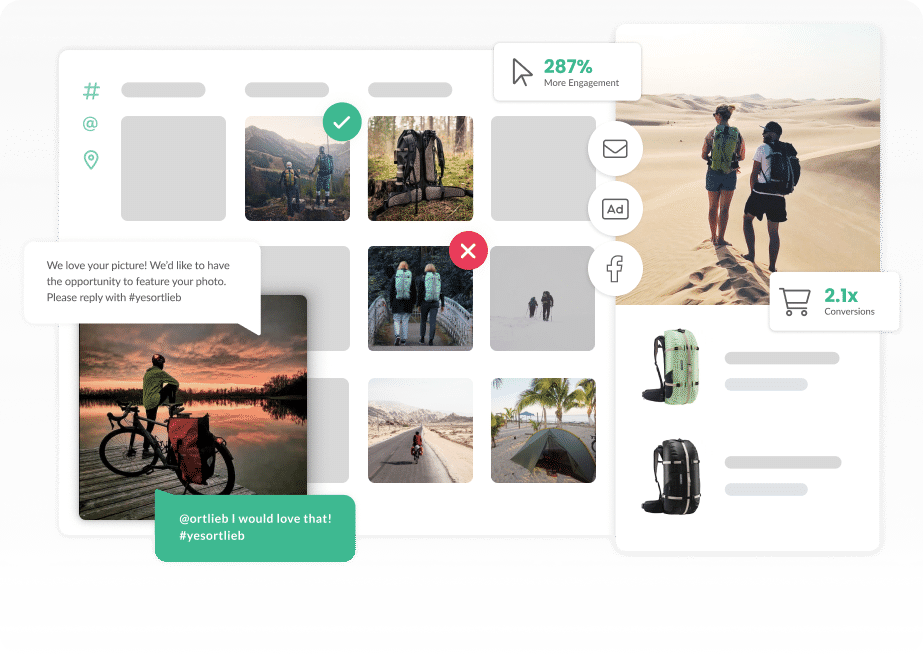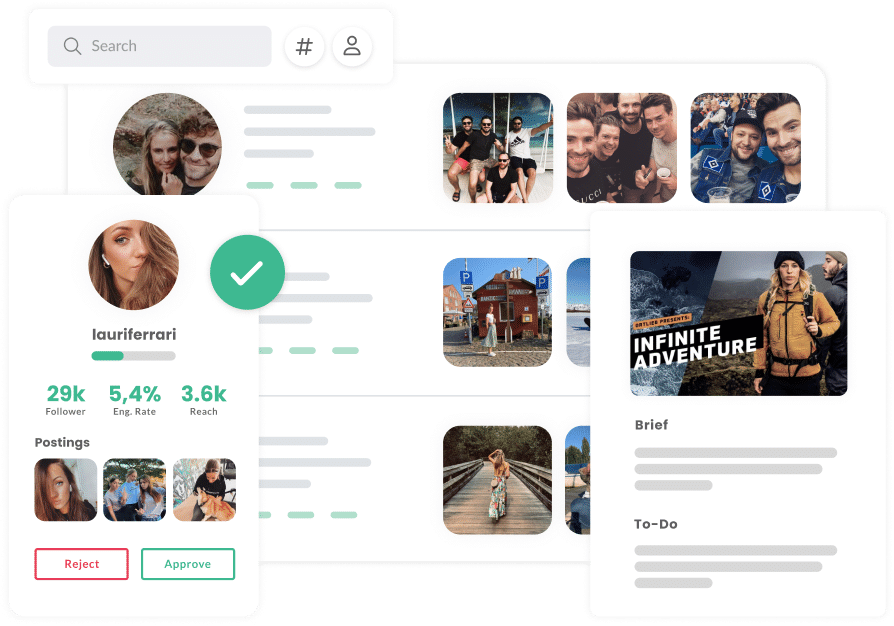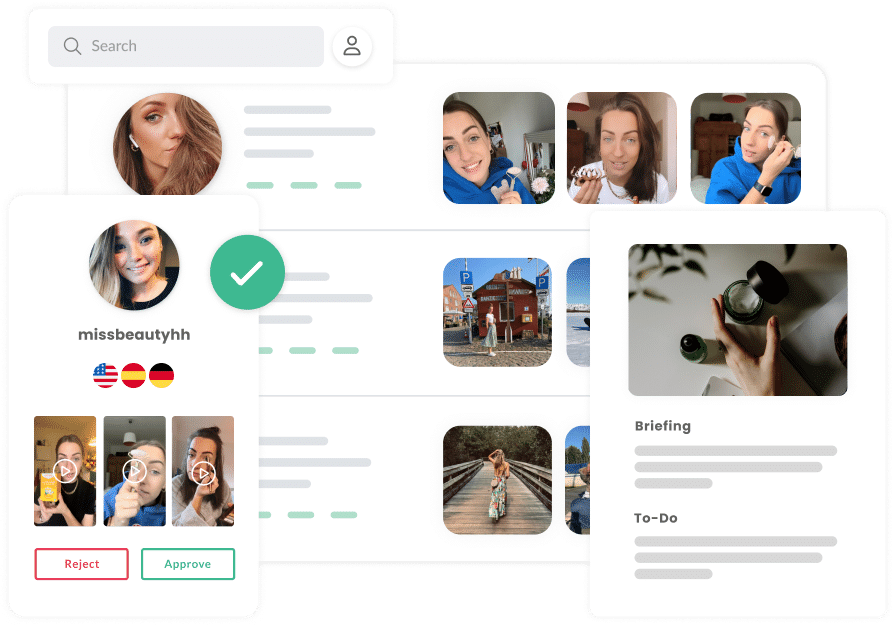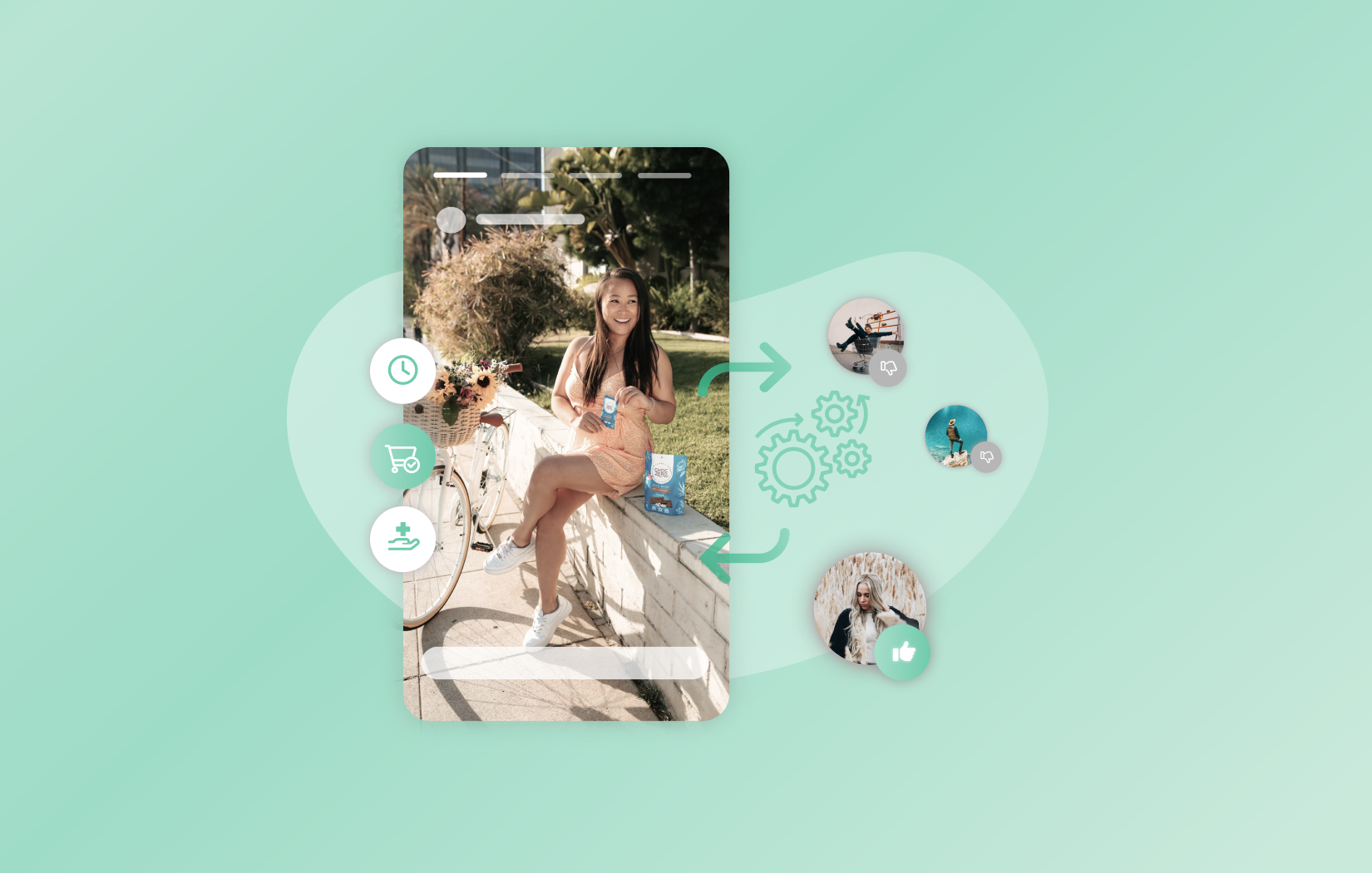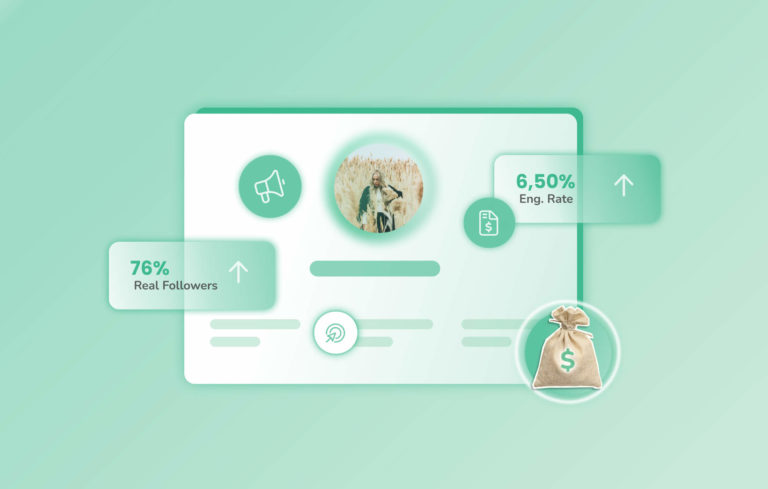Algorithms play a central role in social media. They decide what content we see, which users and creators are suggested to us and how we act on platforms such as Instagram, Facebook, YouTube and TikTok. These algorithms are not only crucial for users, but also for brands that want to reach their target groups effectively. In this article, we take a look at the differences between the social graph and the content graph, their impact on user behavior and what this means for brands’ content strategies.
The power of algorithms
Social media algorithms are computerized processes that determine what content is displayed to users in their feeds and timelines. They play a central role in personalizing the user experience on social media platforms, with different types of algorithms influencing user behaviour in different ways, meaning that brands need to adapt their social media strategies accordingly in order to be successful on different platforms. In the next section, you will find out what is important here.
The social graph: Facebook and Instagram
The social graph forms the basis of algorithms on platforms such as Facebook and Instagram. These algorithms are designed to promote social connections and interactions. They analyze which people you interact with most frequently, which posts you like, comment on and share. This creates a user experience that is strongly geared towards your personal network.
- Focus on social interactions: Facebook and Instagram prioritize content from friends, family and other people close to you.
- Personalized feeds: The algorithms show you content based on your previous interaction history and social connections.
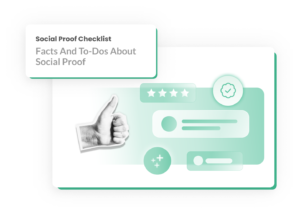
Lade dir jetzt unsere Checkliste herunter, um die wichtigsten Infos und To-dos von Social Proof auf einen Blick parat zu haben.
The content graph: TikTok and YouTube
In contrast, platforms such as TikTok and YouTube rely on a content graph. This is less about social connections and more about the interests and behavior of individual users in relation to content. The feed therefore often consists more of recommended content than content from accounts that a user follows.
- Focus on interests: The algorithm analyzes what kind of videos you watch, how long you watch them and what content you interact with.
- Discovery mechanisms: TikTok and YouTube are designed to suggest new content that matches your existing interests to keep you on the platform for longer.
Social graph and content graph in comparison
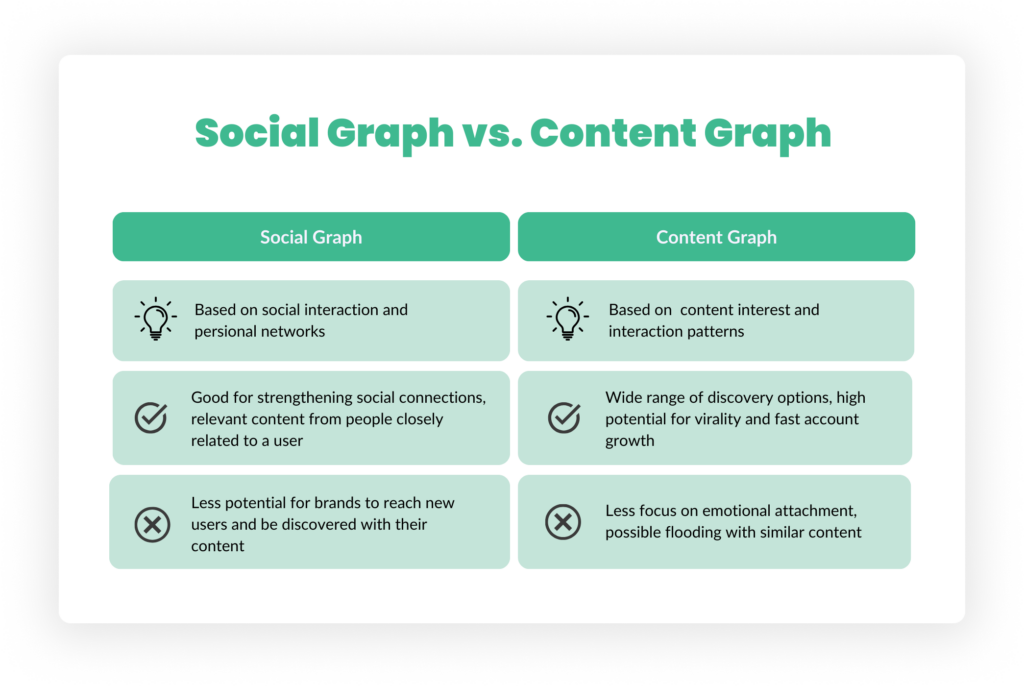
Influence on user behavior
Due to their different characteristics, the two graph types have different influences on user behavior. The social graph promotes social connections and interactions within the user’s own network. As a result, users tend to stay more in their own social bubble. At the same time, it is more difficult for accounts to grow and quickly reach many users who are interested in a specific topic.
In order to build reach as a brand on platforms such as Facebook and Instagram, it is particularly important to post continuously and remain in close contact with your own community. You can find out more about how to optimize your content for the algorithms on Instagram in our blog post on the topic.
The content graph, on the other hand, actively encourages the discovery of new content and thus promotes virality and rapid account growth. Platforms such as TikTok and YouTube actively encourage their users to interact beyond their existing social connections. Conversely, this means that it is much easier for brands to quickly reach many users with their content on this type of social media platform. However, it is all the more difficult to convert the quickly gained virality into sustainable reach. Therefore, when using networks with a content graph, always make sure that you don’t just jump on trends to generate as many views as possible, but also consciously place content with a focus on your products and core topics.
Implications for brands and content strategies
Adaptation of the content strategy
Facebook and Instagram
For platforms with a social graph, you should focus on authentic and personal content that promotes social interaction. Engagement with your community is a factor here. If you work with creators on Instagram or Facebook, you should make sure that they are a perfect fit for your product and your target group in order to hit the right niche. You can find out more about how to find the perfect creators for your brands in our blog post on the topic.
TikTok and YouTube
For platforms with a content graph, it is particularly important to create creative and engaging content. Both TikTok and YouTube are networks that are primarily about entertainment or information gathering. The personal and emotional connection to a creator often plays a much less important role here than on platforms with a social graph. Focus on trends to create reach and generate attention, but also make sure to place topics that are relevant to your target group in order to be successful in the long term. Choosing the right content creator
The right creators for platforms with a social graph
The best content creators to work with on a platform with a social graph are those that have already built a strong and engaged community. Here are some important criteria and examples to consider when making your selection:
Committed community:
Content creators who have an active and engaged follower base are particularly valuable. These creators often have a strong connection with their followers, which leads to higher engagement and trust.
Relevance and authenticity:
The creator’s content should match the brand or campaign and appear authentic. Authenticity plays a major role in the credibility and success of collaborations.
The right creators for platforms with Content Graph
Content creators who have good storytelling skills, can quickly pick up on new trends and are particularly creative are particularly suitable for collaboration on a platform with a content graph, such as TikTok.
Versatility and adaptability
Platforms with a content graph are often particularly fast-moving. This makes it all the more important to rely on creators who are particularly familiar with the platform and its features and know how to reach many people.
Visual storytelling skills
Creators who can convey complex information in short, entertaining videos are particularly in demand on platforms such as TikTok. Creators who specialize in certain topics or niches in particular can benefit from the content graph, as it recommends content based on user interests
Conclusion
The differences between the social graph and the content graph are significant and influence how users consume content and how brands need to develop their strategies. While the social graph encourages social interactions, the content graph enables the discovery of new content and viral growth. For brands, this means they need to carefully adapt their content strategies to each platform to maximize both engagement and reach. By using the right content creators and putting authentic, engaging content at the center of your strategy, you can take full advantage of the different algorithms. In the future, hybrid approaches and cross-platform strategies could pave the way for even more effective marketing efforts.

